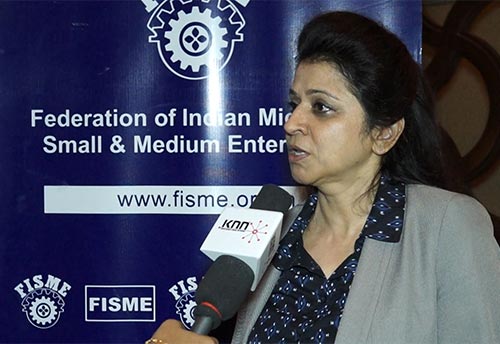Dollar hedging desirable but cost too high
Updated: Sep 02, 2013 05:07:06pm

Bengaluru, Sept 2 (KNN) The on-going currency depreciation has set alarm bells in the industry, particularly those depending more on imports for raw material. The depreciation is so sharp that many are debating whether MSMEs should resort to hedging.
Senior Manager (India and Middle East business, enterprise risk management), Wipro Limited, Vinit Kishore discussed the issue with KNN.
1. What is currency hedging and how does it work?
In export or import of material, we need to deal in foreign currency. Dollar is the most preferred international currency for trading. The value of dollar fluctuates with respect to rupees; therefore the concept of hedging comes into picture.
Currency fluctuation is purely based on demand/ supply of dollars. The government at one point of time was deciding on the value, but now it has indirect impact only on the dollar value. India is net importer of goods (i.e the value of total import is more than the value of total exports). Hence we require more dollars to pay for all the imports done; hence dollar is always a scarce resource in India. Crude oil is biggest contributor of import bill.
There are tools to hedge currency fluctuation. Forward call is the most common and simple. It is an agreement between two parties for foreign currency on a particular date on a particular value. For example, A is an importer of goods and he has to pay USD 100 on 01-Jan-2014. If today’s rate is Rs 60/ USD, theoretically he has to pay Rs 6,000 on 01-Jan-2014. However, he fears that the dollar rate would go up by a large amount by 01-Jan-2014 and hence his bill would also go up.
He therefore has two options: (1) Pay Rs 6,000 today and collect USD 100. Then pay the USD amount on due date. But this would lock his entire investment today itself. (2) Alternatively he can enter into an agreement with B (a Hedger) where at a pre-decided rate of Rs 65/ USD, B would give USD 100 to A on 01-Jan-2014. B charges a pre-decided commission of Rs 0.20/ USD for this agreement. Subsequently, on 01-Jan-2014, if the dollar rate is more than Rs 65, A makes profit due to this transaction, and if it is less than Rs 65, B makes profit.
By making this arrangement, A is sure of his import bill to be Rs 6,520 and make his other plans accordingly. He will no longer be impacted by USD fluctuation.
Imagine another scenario where C is an exporter. He manufactures a certain product at Rs 100 and is happy if he sells it at 20 per cent margin. This means he is happy to sell it at Rs 120. If the dollar rate is Rs 60/ USD, he would put the selling price at USD 2. Now, by the time the sale is done, the dollar becomes Rs 65/ USD. Now, if the sale price remains the same, he would make Rs 130 now. Alternatively, he can reduce his selling price to USD 1.85, and still make the same profit. So the exporter benefits if USD price goes up.
In yet another instance, D is an importer. He imports material worth Rs 100, uses it as one of the raw materials and manufactures a product at the cost of Rs 150. Currently USD rate is Rs 50/ USD. Hence his import material is costing him USD 2. If he sells his product at Rs 180, he makes 30 per cent margin. If the dollar rate goes to Rs 60/ USD, his import cost would go up to Rs 120 and total manufacture cost to Rs 170. If he continues to sell at Rs 180, his margin would come down to 6 per cent only. To make the same margin, he has to increase his selling price to Rs 221. In this case the importer loses if the dollar price goes up.
2. Many big exporters today are resorting to hedging. What about the MSME exporters, are they aware of hedging?
There is reasonably good awareness about hedging among Indian business units. However, the cost of hedging is very high in India; hence people would rather take the risk than hedge the receivable or payable. It is like premium to be paid for insurance. If the premium is high, people tend to live with the risk rather than go for coverage. Nonetheless, any large business house always has a portion of their exposure hedged.
3. Would you recommend that they go for hedging?
It purely depends on the market scenario and the risk appetite of business. Until a few months ago, fluctuation was on the lower side, hence there was less hedging. As far as the present is concerned, I expect an exponential rise in hedging requests. Hedging is more important for importers.
4. How does rupee depreciation impact the cost of hedging? Has it increased or decreased.
The cost of hedging is very high in India. Secondly, there are only a few tools available for hedging in India compared to other developed economies. In addition, the transparency level in Indian Business communities is on a lower side. Hence they prefer to take the risk than being exposed to their entire receivables or payables. Finally the procedures, documentation, etc are not business-friendly.
Hedging costs sometimes significantly add to the input cost of any service or product. (KNN/SD)











